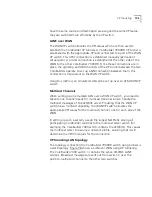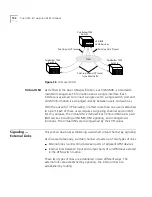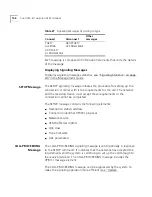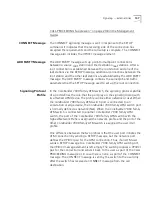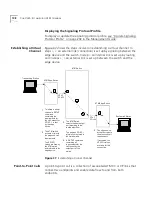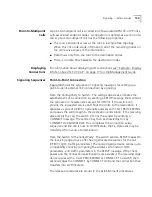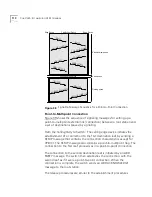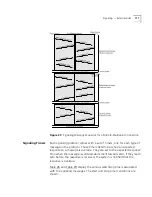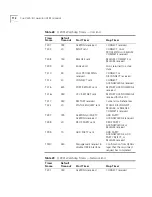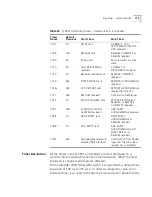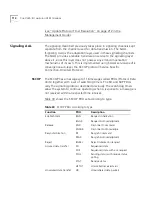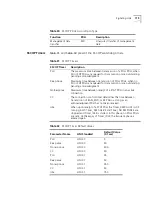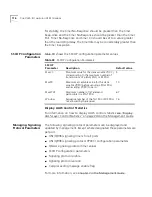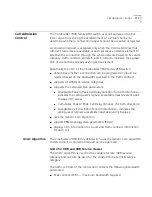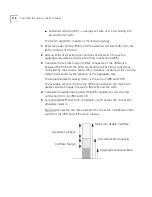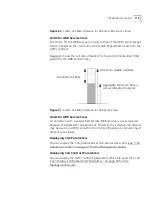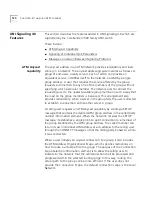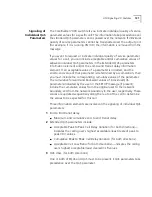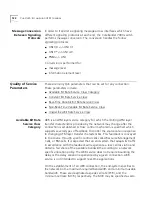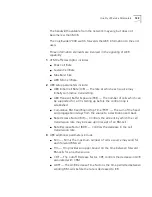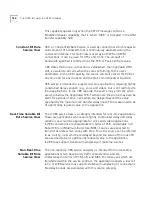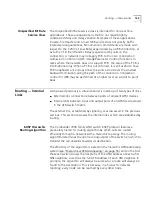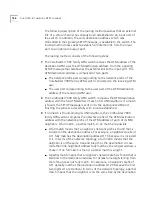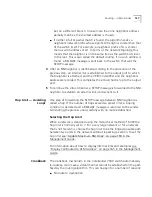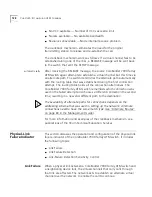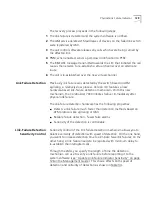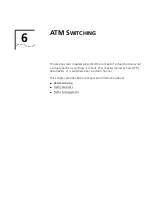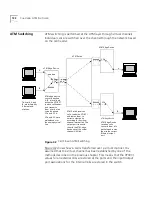
Call Admission Control
117
Call Admission
Control
The CoreBuilder 7000 family ATM switch uses call admission control
(CAC) algorithms during the establishment of a virtual channel to
determine whether a connection request should be accepted or rejected.
A connection request is accepted only when the CAC determines that
sufficient resources are available at each successive network element to
establish the connection through the whole network based on its service
category, traffic contract, and QoS, and in order to maintain the agreed
QoS of connections already existing at the element.
Specifically, the CAC of the CoreBuilder 7000 family ATM switch:
determines whether a connection can be progressed or should be
rejected based on the bandwidth specified in the traffic contract
supports all ATM QoS service categories
supports the extended QoS parameters:
Acceptable Peak to Peak Cell Delay Variation (for both directions)—
indicates the calling user’s highest acceptable (least desired) peak
to peak CDV values.
Cumulative Peak to Peak Cell Delay Variation (for both directions).
Acceptable Cell Loss Ratio (for both directions)—indicates the
calling user’s highest acceptable (least desired) CLR values.
uses the Generic CAC algorithm
support PNNI topology state parameters (RAIG)
displays CAC information for a port and traffic contract information
for each call.
GCAC Algorithm
The CoreBuilder 7000 family ATM switch uses the Generic CAC algorithm
to determine if a connection request can be approved.
GCAC for VBR and CBR Service Classes
The GCAC algorithm is used for the variable bit rate (VBR) service
category and can also be used for the constant bit rate (CBR) service
category.
The traffic contract of the connection contains the following bandwidth
parameters:
Peak cell rate (PCR) — maximum bandwidth required
Summary of Contents for CoreBuilder 7000
Page 12: ......
Page 30: ...30 CHAPTER 1 ATM NETWORK BASICS...
Page 32: ...32 CHAPTER 1 ATM NETWORK BASICS...
Page 34: ...34 CHAPTER 1 ATM NETWORK BASICS Figure 8 LANE Network over WAN...
Page 96: ...96 CHAPTER 4 PRIVATE NETWORK TO NETWORK INTERFACE PNNI VERSION 1 0...
Page 184: ...184 CHAPTER 7 LAN EMULATION VERSIONS 1 0 AND 2 0...
Page 206: ...206 CHAPTER 9 DEVICE MANAGEMENT...
Page 222: ...222 APPENDIX A TECHNICAL SUPPORT...
Page 234: ...234 APPENDIX B PROTOCOLS AND INTERFACES...
Page 238: ...238 APPENDIX C COREBUILDER 7000 FAMILY ATM SWITCH SPECIFICATIONS...
Page 242: ...242 APPENDIX D SAFETY INFORMATION...

